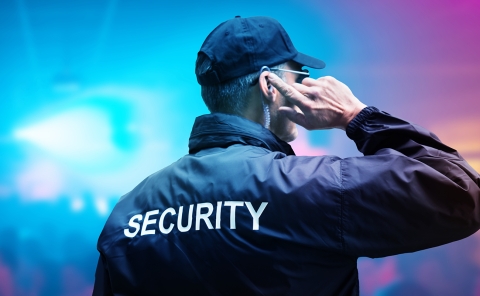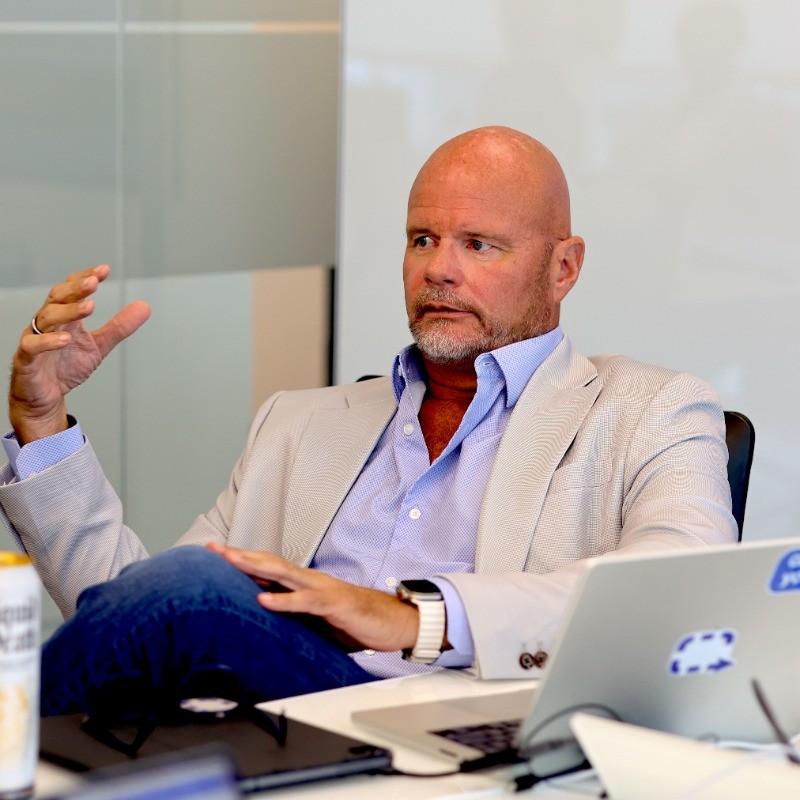Building an Effective Event Security Strategy: 9 Takeaways from SISO Webinar

Trade show security requires more than just hiring guards, setting up checkpoints, and installing cameras––it requires a strategic and adaptable approach. To equip show organizers with practical, scalable security frameworks to help protect attendees, exhibitors, and staff from evolving threats, the Society of Independent Show Organizers (SISO) recently hosted a safety and security webinar, “From Risk to Readiness: Building Event Security That Holds Under Pressure.”
Featuring insights from four industry executives––including Mike Carlucci, COO, Clarion Events; Mike Grant, senior vice president, operations, RX Global; Dan Donovan, founder and managing partner, Stratoscope/Ingressotek/Stratoscope K9; and Freddie Peterson, general manager, Miami Beach Convention Center––the Special Interest Group (SIG) session explored risk assessment, real-world security applications, and crisis response tactics, and provided attendees with insights and best practices for implementing effective security measures at every level of experience and budget.
We attended the webinar and compiled a curated list of nine takeaways to help organizers create a robust, comprehensive security strategy for trade shows.
Start Early with Pre-Planning
- Begin security planning months in advance, not days before the event
- Integrate security considerations into initial event design and layout
- Include security teams in early floor plan discussions to optimize access points and crowd flow
- Conduct thorough site-specific assessments considering event type and scale; audience and exhibitor profiles; speaker/keynote requirements; local geopolitical climate
“[Effective event security is] all about pre-planning,” Peterson said. “It just shouldn’t be three days before the event that you’re starting to look at your security plan––it’s what you do months or a year in advance, leading up to your event.”

Implement a Layered Security Approach
Conduct a risk assessment that includes:
- Evaluating potential threats specific to your event
- Considering protest activities and social climate
- Assessing choke points and vulnerabilities
- Rating your event’s security needs systematically
“I would look at [risk assessment] in five buckets,” Peterson said. “One is a site-specific assessment, considering the event type, the audience profile, exhibitor profile, guests, session, speakers, keynotes, etc. And then, the geopolitical and social climate – it’s super important to take that into account.
He continued, “Consider risks, not only from the center, but from the hotels to the venue. Look at what is going on in the local community, whether attendees are walking or taking shuttles, etc., so you’re ensuring more of a holistic approach to safety.”
Collaborate with Stakeholders
Partner with:
- Local law enforcement
- Fire and rescue teams
- Convention center security
- Hotel partners
- Destination management organizations
- Convention and visitors bureaus
“You’re bringing your event to a city, and maybe you’re coming year after year, so you have the power to put the pressure on in the nicest way possible,” Donovan said. “You can say, ‘We’re bringing this economic impact [to your destination] year over year...we need your help.”

Recommendations for access control and credentialing included:
- Implementing robust badge systems for attendees
- Verifying credentials for all staff, including temporary workers
- Controling back-of-house access points
- Considering using AI and biometric technologies where appropriate
Optimize Your Security Investment
Devise a “Smart Budget” that includes intelligent tracking, goal-based planning, and flexible allocation:
- Focus on management oversight of security personnel
- Add senior security coordinators to supervise contracted guards
- Invest in proper credentialing systems
- Consider modern screening technologies
Implement cost-effective measures by:
- Utilizing existing venue surveillance systems
- Leveraging local law enforcement resources
- Implementing clear communication protocols
- Creating detailed incident response plans
Create a Communication Framework
Establish clear protocols by:
- Defining decision-making chains
- Creating unified communication strategies
- Identifying key stakeholders for emergency responses
- Developing pre-planned response scenarios

Build a response team by:
- Designating incident assessment teams
- Defining roles and responsibilities
- Including venue management in planning
- Establishing communication channels with local authorities
“Ensure that your security plans are integrated and not just transactional,” Peterson said. “Integrate them into everything you need to do, and this includes staff being fully informed and prepared.”
Consider the Attendee Experience
Key considerations include:
- Designing security measures that don’t disrupt event flow
- Planning entry points to minimize congestion
- Communicating security measures positively
- Remembering that most attendees now expect and appreciate visible security
“Most attendees, whatever type of show we’re doing, expect [security],” Donovan said. “And if they’re coming to a show and looking around and not seeing evidence of that, they may not feel so good about that [event] anymore. You change the whole guest experience by applying a security layer to the event that they expect and want.”
Prepare for Common Challenges

Be ready for:
- Protest activities
- Medical emergencies
- Crowd management issues
- Natural disasters
- Cyber security threats
- Weapons concerns
Best Practices for Implementation
Here are six recommendations from the speakers:
- Map out movement patterns and identify coverage gaps
- Create comprehensive risk assessments
- Develop unified communication strategies
- Train staff thoroughly on emergency procedures
- Test and practice response scenarios
- Review and update plans regularly
Final Tips
The speakers shared these additional tips:
- Document all security procedures and protocols
- Regularly update emergency response plans
- Maintain open communication with all stakeholders
- Stay informed about local conditions and potential threats
- Consider conducting table-top exercises with key team members
Event security is not just a checklist item; it’s an ongoing, collaborative effort among all stakeholders that requires constant attention and adaptation. Think of it as creating invisible layers of protection that work in harmony – your attendees might not spot them, but they’ll feel more confident knowing they’re there.


Add new comment